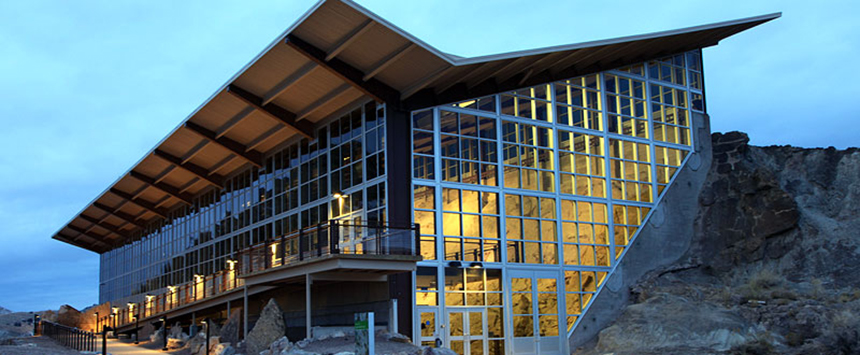
Dinosaurland: A Piece of Prehistory
Dinosaurland is about more than dinosaurs, but they certainly are a draw. Visitors from all over the world travel to Northeastern Utah to see the vast stretches of visible evidence that these monstrous creatures once roamed the earth.
Located on the border between Utah and Colorado, where the Green and Yampa rivers join, Dinosaur National Monument spans more than 200,000 acres. Thousands of fossils were discovered here in 1909, and 80 acres were declared a protected national treasure in 1915.
The huge expansion came later, in 1938, to protect the site’s extensive natural history.
In addition to dinosaur fossils and dinosaur footprints, this part of Utah is home to many ancient petroglyphs (carvings in stone) and pictographs (paintings on stone).
Getting Around Dinosaur National Monument
Since Dinosaur National Monument covers more than 200,000 acres, you will want to have a clear sense of which parts you want to see before heading out into the wilderness. The Colorado side of Dinosaur National Monument is an excellent destination for accessing deep canyons along the Yampa and Green Rivers. Also near here is Harpers Corner Road, which affords glorious river views. Nearby, you’ll also find the Canyon Visitor Center, open all summer and parts of spring and fall. The Canyon Visitor Center is two miles east of Dinosaur, Colorado, just off U.S. Highway 40.
If your goal is to see dinosaur fossils and footprints, you should head to the Utah side of Dinosaur National Monument. This is where the world-renowned dinosaur quarry is located, where dinosaur digs have uncovered a wealth of prehistory. More than 1,500 fossils are still embedded in the cliff face here. Half a mile from the quarry, you’ll find the Dinosaur Quarry Exhibit Hall and Visitor Center. You can take a shuttle bus in the summer between the Visitor Center and Exhibit Hall. In other seasons, rangers lead car caravans up to the Quarry.
For more information, visit Uintah County Tourism.
Back to Utah Welcome Page